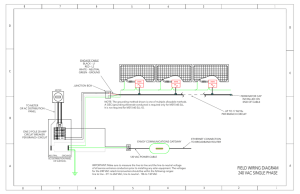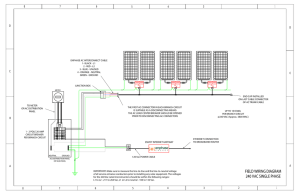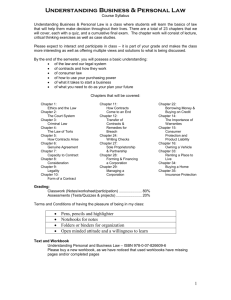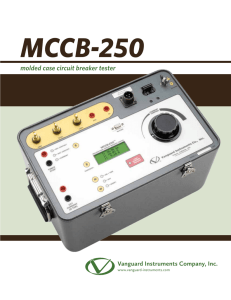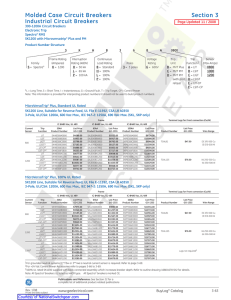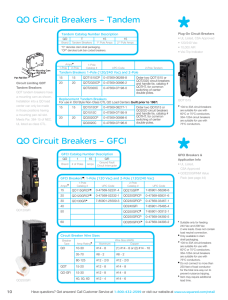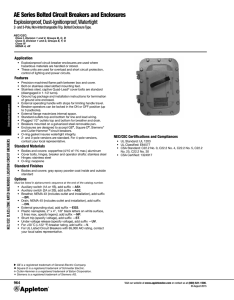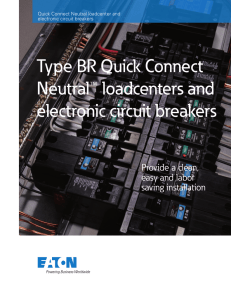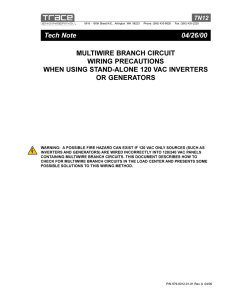Circuit Breaker Panel Configuration Diagram
advertisement
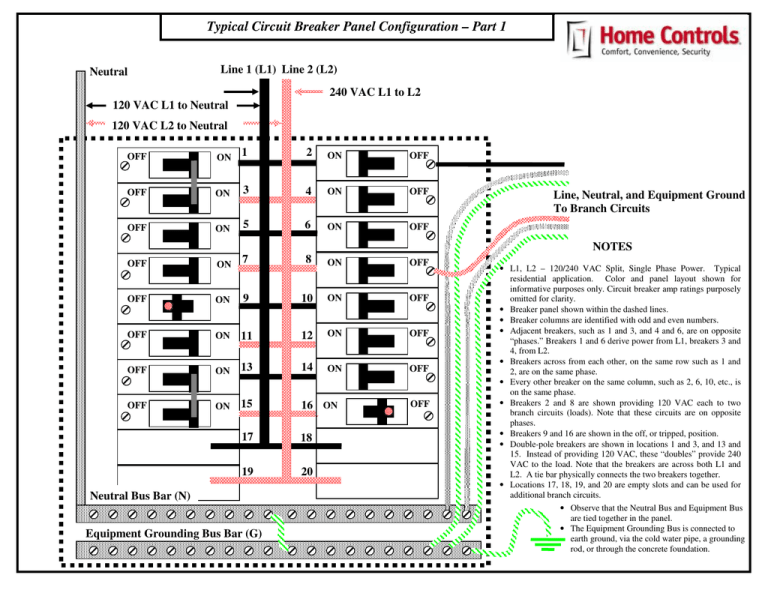
Typical Circuit Breaker Panel Configuration – Part 1 Neutral Line 1 (L1) Line 2 (L2) 240 VAC L1 to L2 120 VAC L1 to Neutral 120 VAC L2 to Neutral OFF ON 1 2 ON OFF OFF ON 3 4 ON OFF OFF ON 5 6 ON OFF OFF 7 ON 8 ON OFF OFF ON 9 10 ON OFF OFF ON 11 12 ON OFF OFF ON 13 14 ON OFF OFF ON 15 16 ON 17 18 19 20 Neutral Bus Bar (N) Equipment Grounding Bus Bar (G) Line, Neutral, and Equipment Ground To Branch Circuits NOTES OFF • L1, L2 – 120/240 VAC Split, Single Phase Power. Typical residential application. Color and panel layout shown for informative purposes only. Circuit breaker amp ratings purposely omitted for clarity. • Breaker panel shown within the dashed lines. • Breaker columns are identified with odd and even numbers. • Adjacent breakers, such as 1 and 3, and 4 and 6, are on opposite “phases.” Breakers 1 and 6 derive power from L1, breakers 3 and 4, from L2. • Breakers across from each other, on the same row such as 1 and 2, are on the same phase. • Every other breaker on the same column, such as 2, 6, 10, etc., is on the same phase. • Breakers 2 and 8 are shown providing 120 VAC each to two branch circuits (loads). Note that these circuits are on opposite phases. • Breakers 9 and 16 are shown in the off, or tripped, position. • Double-pole breakers are shown in locations 1 and 3, and 13 and 15. Instead of providing 120 VAC, these “doubles” provide 240 VAC to the load. Note that the breakers are across both L1 and L2. A tie bar physically connects the two breakers together. • Locations 17, 18, 19, and 20 are empty slots and can be used for additional branch circuits. • Observe that the Neutral Bus and Equipment Bus are tied together in the panel. • The Equipment Grounding Bus is connected to earth ground, via the cold water pipe, a grounding rod, or through the concrete foundation.
